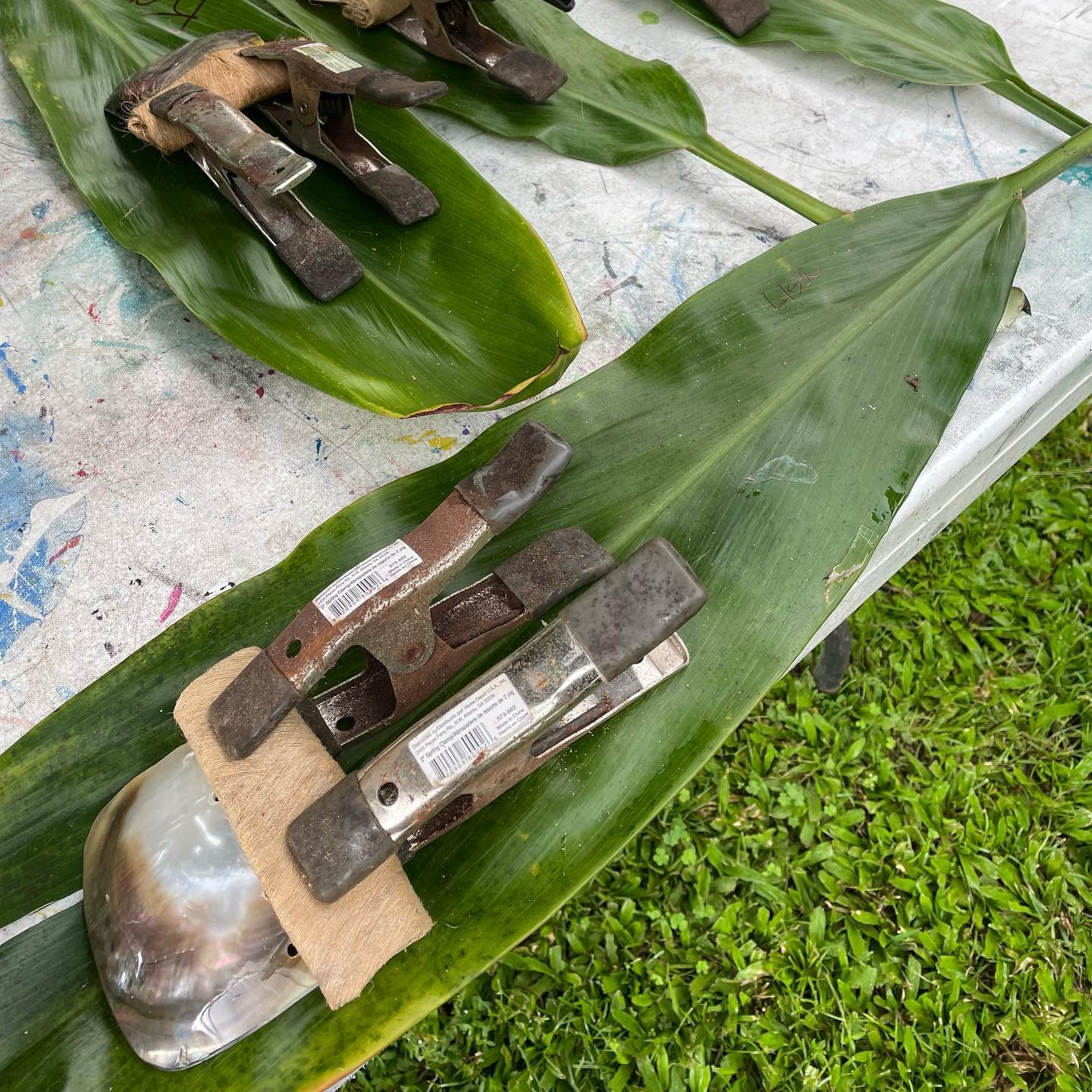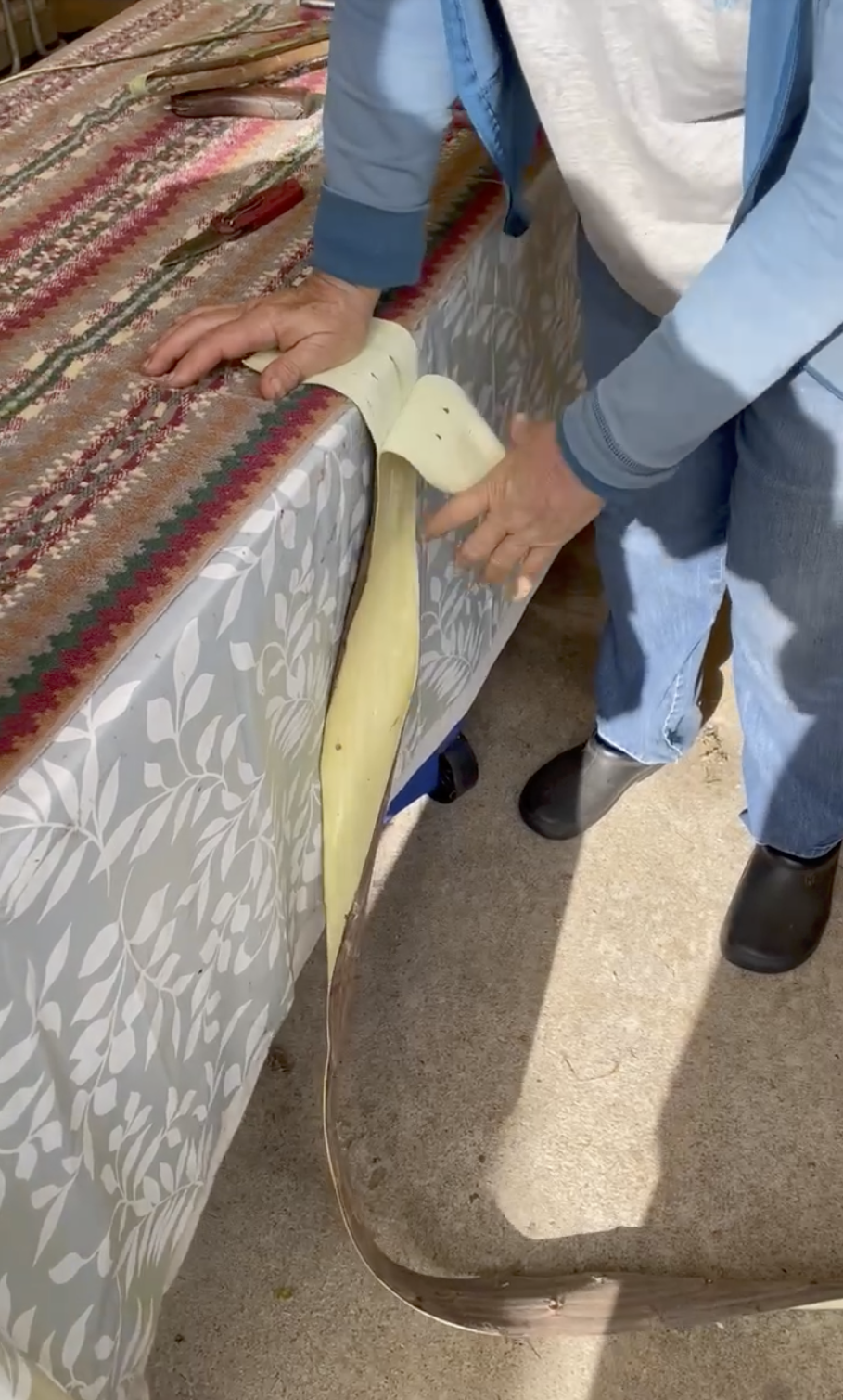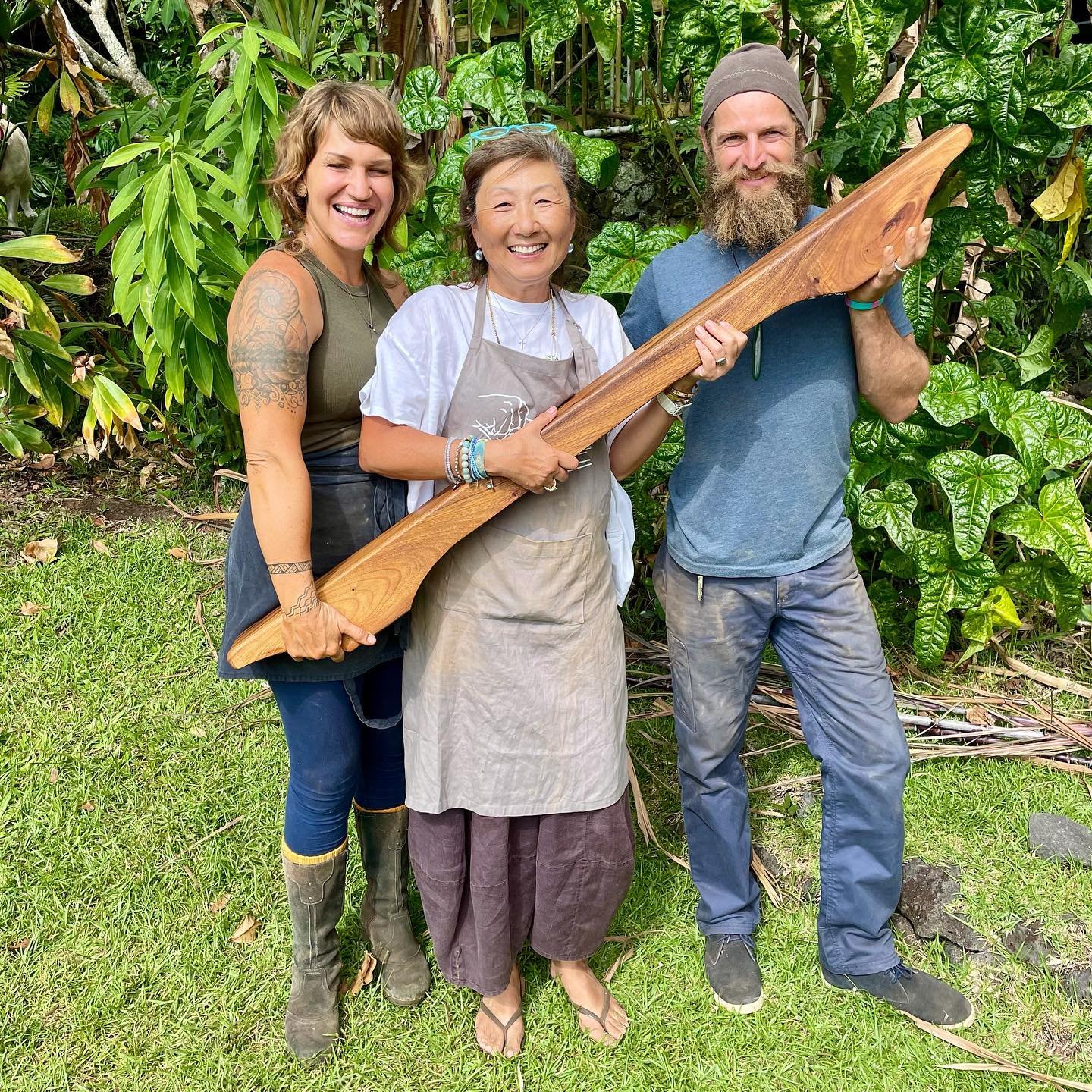Tools used to process fiber
Kapa tools are often made using found natural materials that are gathered with respect to the earth. I went to beautiful Laupahoehoe Beach Park to search for my kua pōhaku (stone anvil), a smooth, flat bottomed river rock used for the initial beating of kapa). Exploring the Big Island for rocks was full of moments of excitement and wonder. The waves and tide pool reflections during sunset shown here offered inspiration for future works.
I eventually found a rock for my pōhaku at Hakalau Beach Park. She called to me at the end of the day, and I asked permission for her to stay with me while on the island, along with an offering of a ti leaf and orchid blossom. At the end of my stay in Hawaii, I returned the stone back to the beach.
Over the course of a few months, I also learned how to create other tools for processing kapa at Donkey Mill Art Center. The wa’u is a shell scraper used to remove the outer bark and middle green bark of wauke (paper mulberry), until you reach the inner white bast fiber. It is also used to scrape and clean the bast fiber after retting. Lashing the coconut fiber onto my wa’u cultivated my sense of perseverance and self compassion.
My niho ’oki (shark tooth knife) has a wooden handle made of ohi’a and is used to help cut the wauke and split the layers of bark fiber. As shown by my Kumu Roen, the inner white bast fiber is stripped from the outer dark bark, then rolled up and soaked first in sea water for up to a week and then in fresh water until the fiber is ready to beat.
Carving beaters
In order to felt layers of kapa, I made a hohoa (round beater, shown in the center) out of ifilele, a hardwood native to Samoa.
I also carved and sanded my i’e kuku (shown at the far right), a square wooden beater used to felt, mend and watermark kapa.
The felting process initially begins on my pōhaku, and then continues on an extra long kua lā’au (wooden anvil). The underside of the kua lā’au is often carved out which results in the wonderful drumming sounds when beating kapa.
Working with wood is a new method for me and it was quite a challenge, especially carving into hardwoods. Even though I wanted to use non-electric powered tools, I relented in the end because the wood was too hard. A dremel is a must have tool for this work! It was fun learning about and using new tools for the first time.
I am deeply grateful to my teacher, Puakea Forester, and her partner Nathan Foster-Forester, who are pictured here, for helping me source and work with wood.
Beating kapa
Lisa beating kapa
Beating kapa with Lisa’s hui
Working by the ocean
With the ocean as my muse, I experimented with soaking mo’omo’o, once beaten kapa, in sea water and beat it using improvised tools I found on the grounds of my rental home. The found stone and wooden anvils (kua), worked well. There were plenty of lava rocks on the beach, and I placed several along the perimeter of the kapa to dry.
Cleaning kapa
I use tweezers to remove non-white bark specks from kapa. As in traditional hanji making, white kapa without inclusions of darker bark were considered the best quality and were reserved for the ali’i , royals or nobility.
Using stones to stabilize kapa
When finished processing the fiber, I “rock” my kapa to dry using natural lava rock. The rocks allow the kapa to dry flat without curled edges and minimize shrinkage of the fiber.













